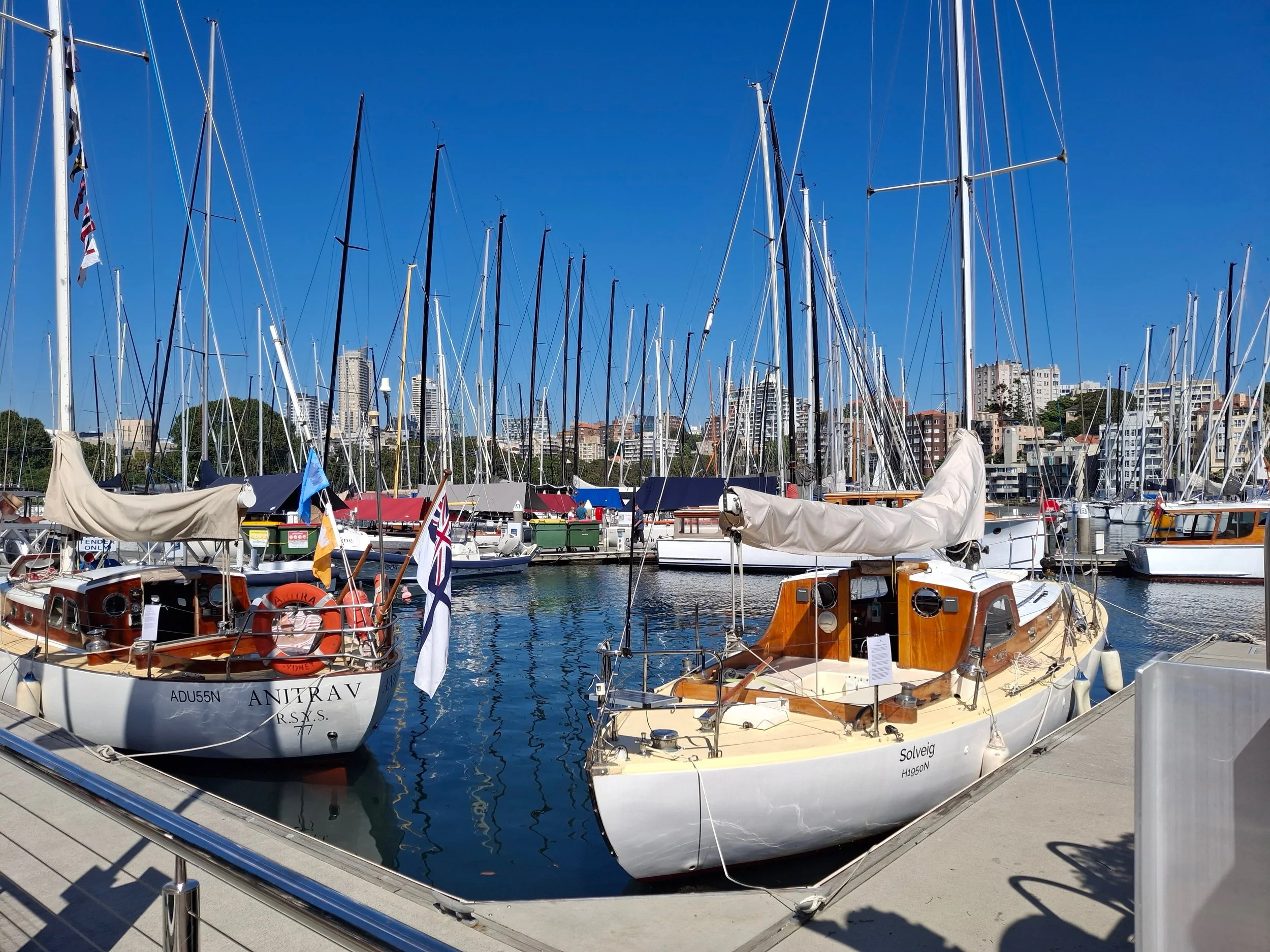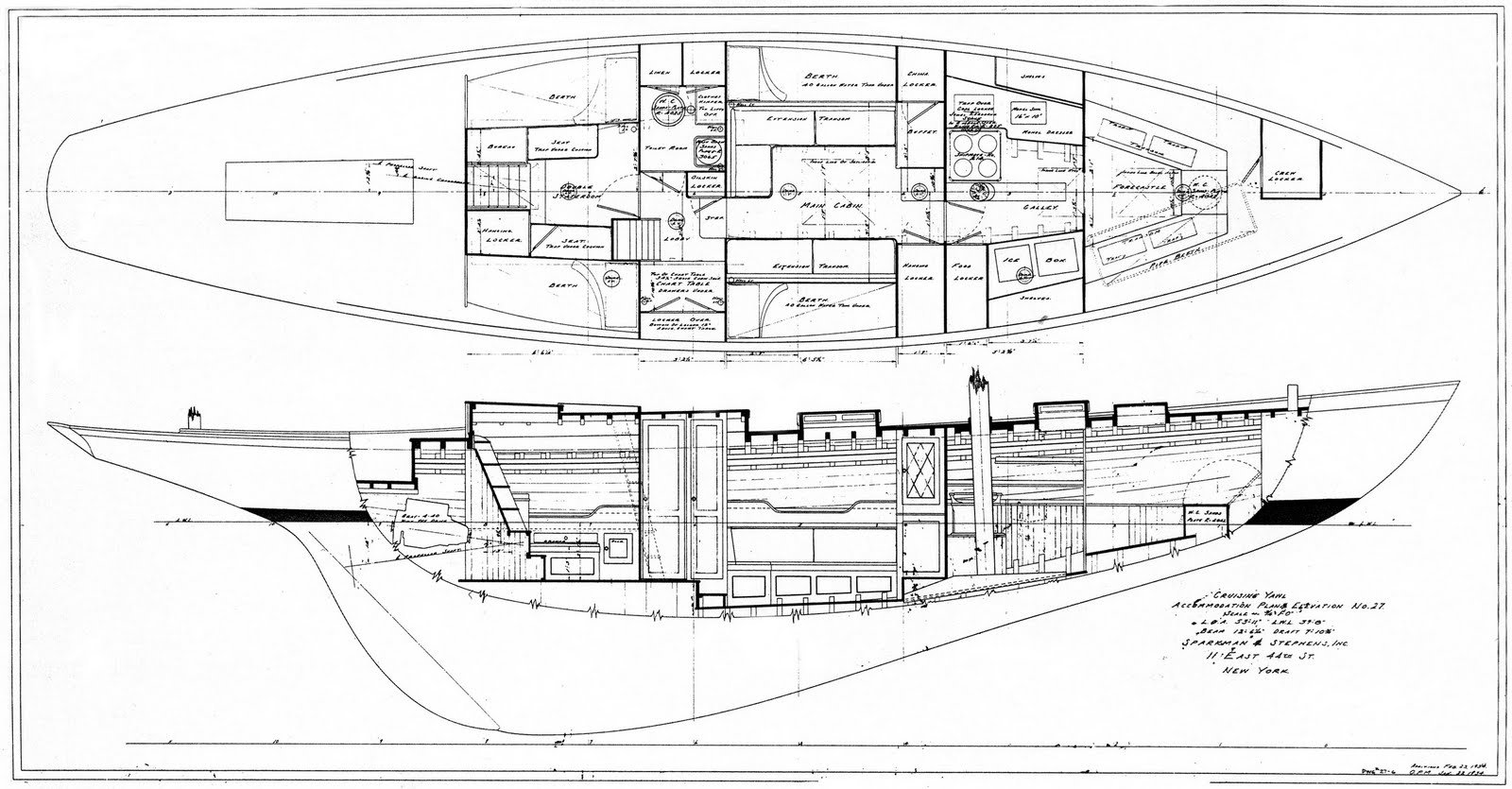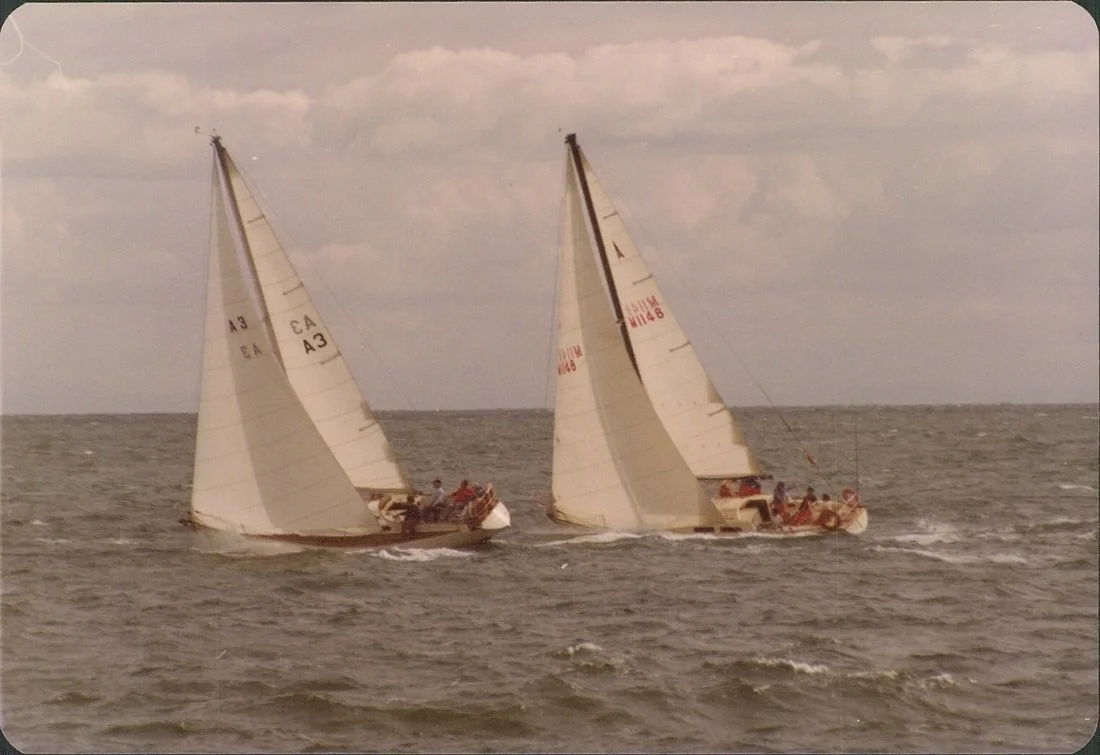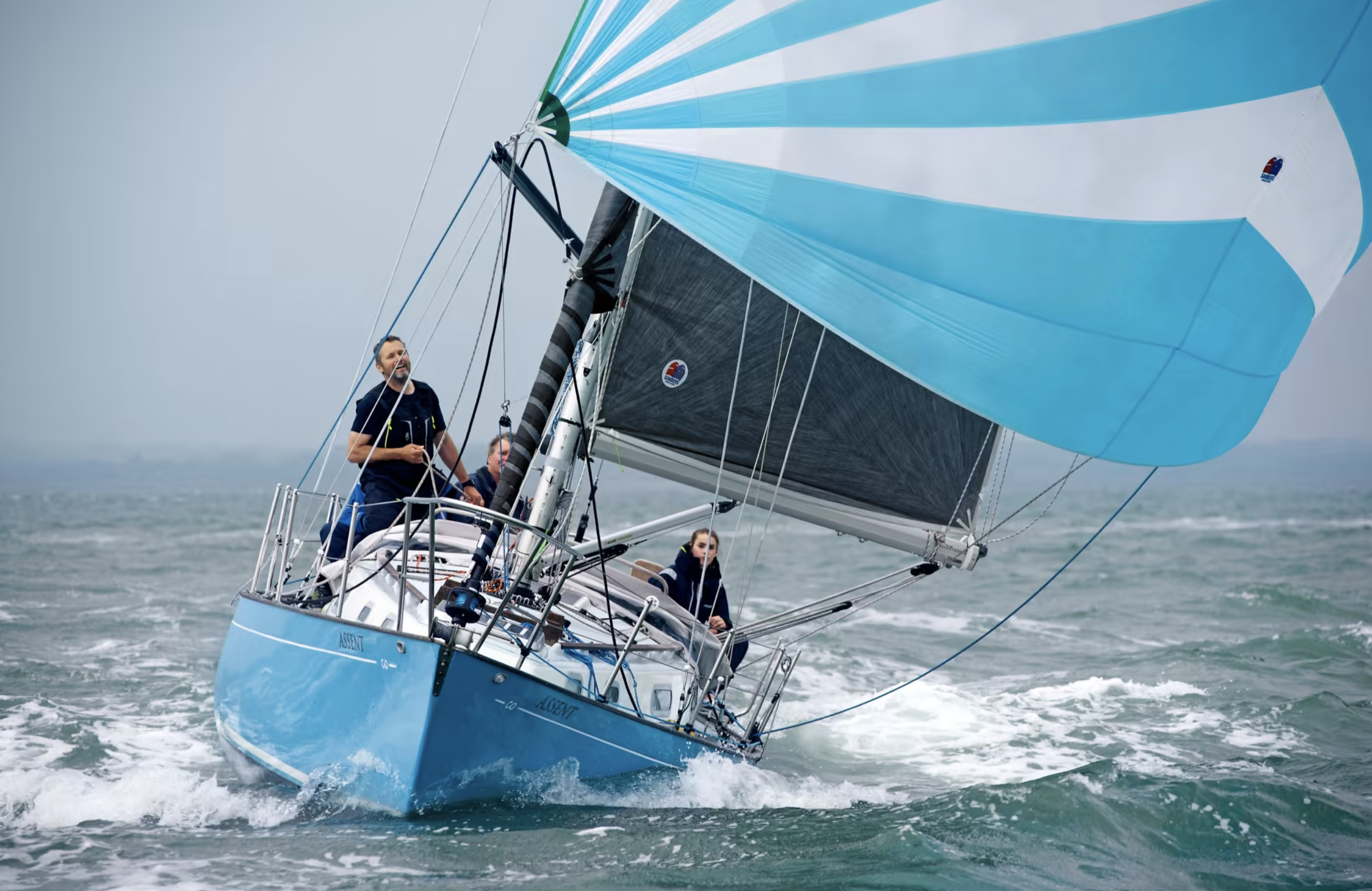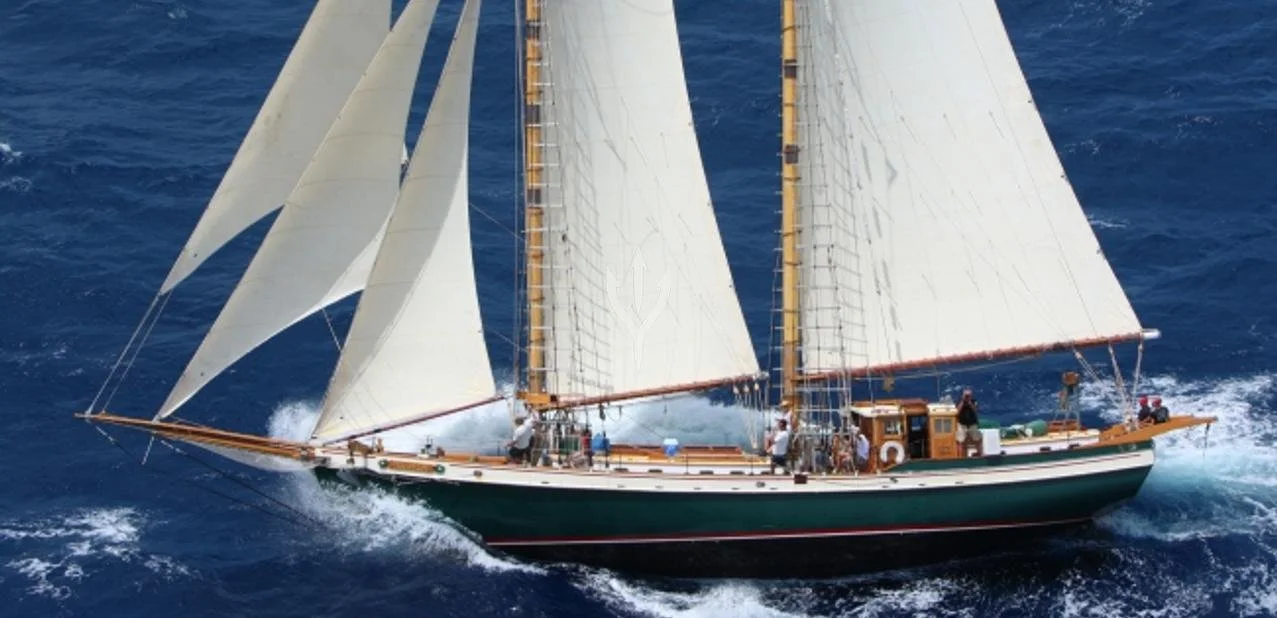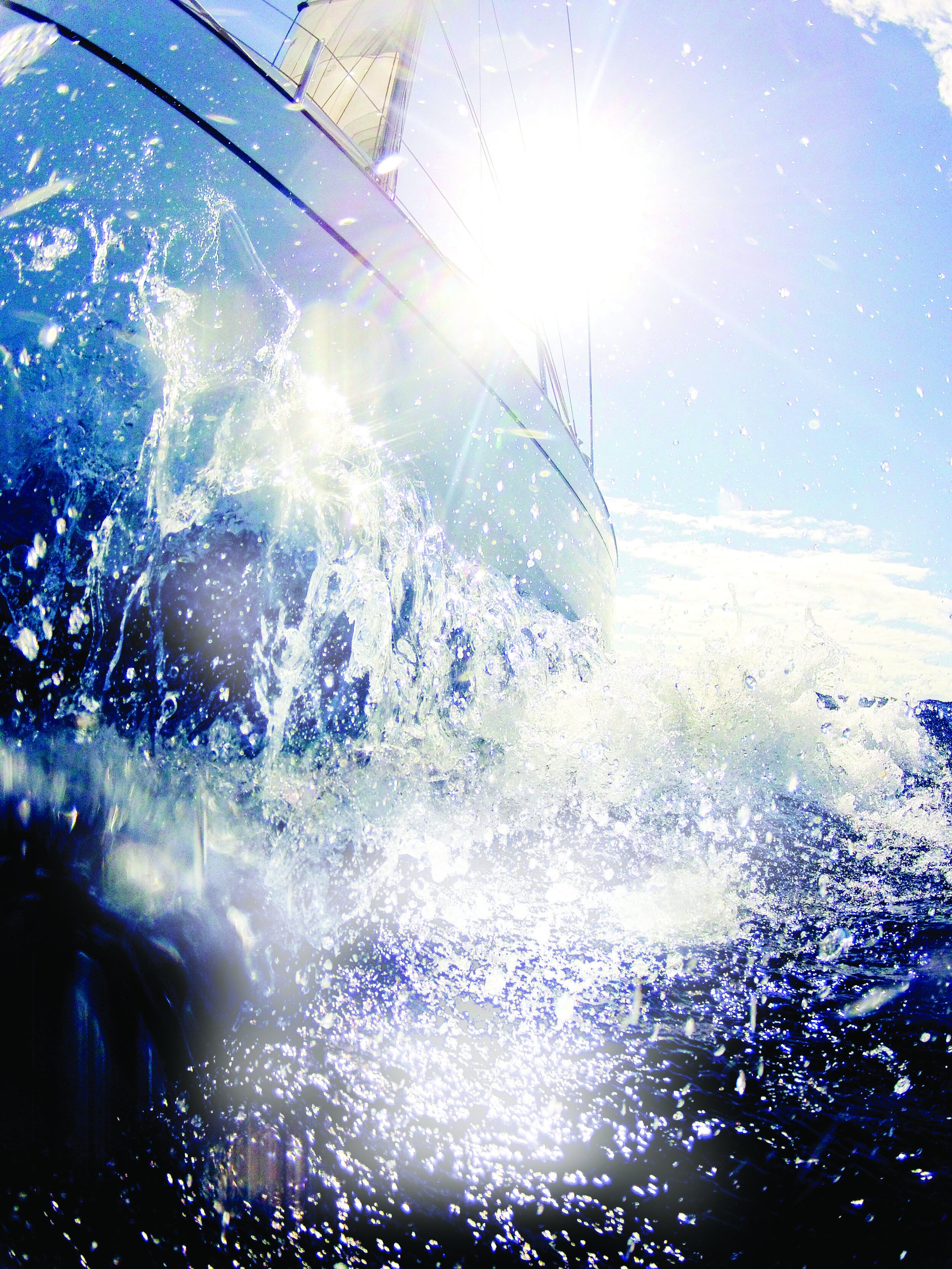
The News, Culture and Practice of Sailing woodenboats
in Australia, New Zealand & The South Pacific.
The House
With a whole family of dedicated sailors, and his father famous for designing a distinct class of classic yachts developed from traditional hull forms, it should be no surprise that the ribs and shells of the Opera House share a strong geometric and functional connection with traditional Viking and Scandinavian boat forms.
Fidelity to the Demands of the Sea
Halvorsen boats hold a special place in the hearts of many Australians. Halvorsens were renowned for their innovative design, quality vessels, and distinctive styling.
The Halvorsen Story-Centenary Celebrations
The Halvorsen brothers Magnus and Trygve competed in most of the Sydney Hobart Races from 1946 to 1965 in their own designed and built boats, and won the event on handicap five times with Solveig, Anitra V and Freya.
Classic Performance: an Alternative View
A very long time ago I was in the boatyard talking to a retired marine engineer who had hauled his 35 -foot long keel yacht out for maintenance. Knowing I was a budding naval architect he imparted what he though was wisdom to me. “Look at that boat” he said, puffing his pipe whilst pointing to the modern fin keel yacht hauled out next to his. “It’s completely unsound to separate the keel out like that and hang it from the hull with a few bolts. It’s much too radical a design for offshore sailing”. The boat in question was an S&S 34
Classic Performance - Part V
It appears that there is currently a clear choice for designers between either ‘modern’ or ‘traditional’ hull designs, which produce quite different handling characteristics. This provides a significant challenge for designers to adopt the significant benefits of both hull types, without inheriting any of the poor handling qualities.
Classic Performance - Part IV
A well-balanced hull however, retains a stable longitudinal position of CLR as it heels. This property is crucial to ensuring the balanced helm of a yacht. If the boat is also directionally stable, it is even possible for the hull balance to be matched to the turning effect of the heeled rig, enabling the boat to free-sail ‘hands free’ at any heel angle.
Classic Performance - Part III
A boat is directionally stable when CLP is aft of LCG, even when the rudder is free to turn. It is said to be in a state of ‘stable equilibrium’. These craft with long keels or skegs aft tend to track straight ‘hands free’ without the need to hold the tiller and they also track straight under tow, but are directionally unstable and difficult to steer when moving backwards.
Classic Performance - Part II
While witnessing these wonderful displays of classic yachts outperforming lighter modern boats with their longer waterlines, “something simply just does not ring true!” How can these classics win off scratch in mixed fleets, often against ‘significantly faster’ boats of more ‘flighty’ proportions and high tech construction and yet be considered slow and outdated.
Classic Performance Part 1
Consequently, winning races became a challenge to outsmart the rule maker as much as to produce a better boat. Unfair shapes with rule cheating ‘rating’ lumps and bumps, poor stability, structural failures and handling issues became the norm, as the design challenge was to find the fastest sailing configuration which would ‘appear slowest’ under the version of the rule applying at the time.
CARESS-A magnificent restoration
With her distinctive raised deck, pretty canoe stern and unique shear strake, CARESS is the epitome of a truly classic design from a past era.
An Ama to Windward
The Pacific proa configuration has many advantages, including considerably less load on the beams, and thus the rig. Having the ama to windward, although seemingly counterintuitive, is actually safer, as its weight, combined with reserve buoyancy in the main hull’s leeward pod, makes the boat much more resistant to capsize.
The Boats of Norman R. Wright & Sons
In 1960 we're starting to get into the fast boats. We built the first Customs Boat, a 40-footer called BINDERY which had a six cylinder 671 Detroit Diesel and it would do 20 knots. The Department of Customs took Dad's plans, copied them put them out to Tender. So there were five other boats built, and they all did about 14 or 15 knots because they thought the buttock lines shouldn't be bent. Dad always reversed his buttock lines so th boat sat on a big wedge at the back and customs could never work out why the others never went as fast.
Whose Plans are They? S&S v Mystic Seaport
On January 15, 2021, S&S filed this lawsuit alleging that the Museum breached the 1989 Agreement by selling copies of S&S plans for use in the restoration of boats, failing to properly preserve S&S materials, and failing to maintain a log of sales for the years 2000 to 2004.
Impracticality In Its Most Beautiful Form
Where many Spirit of Tradition designs would rest with the traditionally-shaped hull and classic styling on deck and mate them with a “standard” high-performance Marconi sail plan, we’ve opted to fully embrace the period piece and supply Beaujolais with an in-character gaff rig and lengthy bowsprit. Not only does this fully commit to the genre used as inspiration, it also offers some powerful advantages.
Tony Mackay tells The Halvorsen Story
Lars Halvorsen’s five sons and family created what became the largest and most famous Australian boatbuilders of their era, later taking their skills to Hong Kong and China, with exports all over the world. The story is one of hardship and passion, stoicism in the face of great adversity.
The 930-Year-Old Dugout Canoe
Students of dugout sculpting believe that once the tree was felled, it would have been stripped of all its bark, then have its future top and bottom surfaces determined by its curvature, if any.
Yachts The Ilk Of which I Most Adore
I remember trying to sleep in the forward berth and being “squeezed” as the bow flexed - rather frighteningly as they were built to be very light - perhaps too light, as much strengthening was needed before the next trip in rough weather.
Including GRP Icons?
“…She was built at a time when people wanted adventure on the water, rather than a chilled Chardonnay tied to a pontoon.”
GLORIA-Perfection afloat
The creators of GLORIA were certainly looking for perfection during their 15 year build at Wilson’s in Cygnet. I’m not sure if they achieved contentment but they certainly created one of the most special yachts in Australia.
Rating rules shaped our boats
The purpose of any rating rule is to enable yachts of different sizes to race together fairly. Without a rating rule there could be no enjoyable racing as, barring unforeseen circumstances, the largest yacht (and the richest owner) would always win.
SWS IS A SURPRISING SUCCESS STORY
BUT TO CONTINUE, WE NEED YOUR HELP.
Your donation will help us to publish your weekly source of
woodenboat inspiration and grow this unique community.




